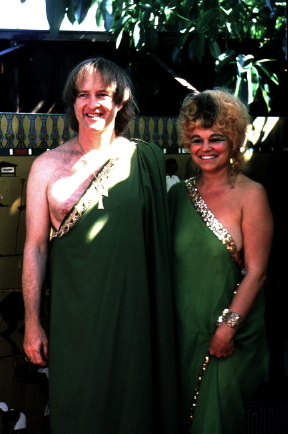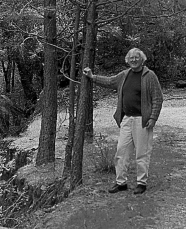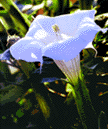A missive showed up in my inbox lately, written by some Wiccan Web denizen, who although in a coven (this part was confusing) had had some sort of vision or revelation involving the number 1734, which led him/her/it to my
Witches' Voice piece on the so-called "1734 Tradition."I say "so-called" because I think that there is less there than meets the eye. I am too young to have known its founder, Robert Cochrane, but I did know people who knew him, such as Evan John Jones --
who himself was never sure of Cochrane's bonafides.
Something you learn along the path is that magickal ability does not always come packaged with moral uprightness. Actually, the Catholic Church says much the same thing in its doctrine of
ex opere operato, meaning that the sacrament is still effective even if the priest is a sinner.
In North America, the "1734" (it's a message, not a date) tradition derives from a series of letters that Cochrane sent over a few months in the mid-1960s to Joe Wilson, then serving in the US Air Force. The two never met; Cochrane's suicide interrupted the correspondence.
When you read those letters--or Cochrane's lengthier correspondence with the English magician William Grey--you can see him hinting at Great Mysteries, playing a game of "I'll tell you one of my secrets if you tell me one of yours first," and suggesting that students try a new technique, which, if it is successful, the teacher will then claim to have known about all along.
He had the mojo, but he also (somewhat like Alex Sanders) had an inferiority complex about the Gardnerian Witches, who had a ten-year head start. His response was to claim access to traditions more secret, more traditional, more ancient--and then try to find evidence for them.
On this side of the pond, Gardnerian Witchcraft had arrived in book form in the 1950s and in person (the Bucklands) in the early 1960s. The interest in the Craft, however, was far greater than one "legit" Gardnerian coven could meet. Consequently, all sorts of new forms of American Wicca sprang up. The Cochrane-Wilson letters were copied and passed around, becoming one form of non-Gardnerian "traditional Craft" that people could recycle to show that they too had the Real Old Stuff.
This new mix of Pagan, ceremonial magical, old-school occultism, and other elements flourished in Southern California, of course. If you read Ann Finnin's
The Forge of Tubal Cain, you get a lively who-said-what-to-whom first-person narrative of the Los Angeles-area Craft scene in the 1970s--including some discussion of links between the Society for Creative Anachronism, other SF-fantasy fandom and the Pagan movement, an area that has not been researched enough.
Finnin and her husband Dave have been group leaders for more than 30 years, and part of
The Forge of Tubal Cain is devoted to issues of running a coven, avoiding problems, building a group mind, and so forth.
The remainder of the book gives portions of the training and ritual used in their group, the Roebuck, which may be seen as an extensive ritual and religious system based partly on Cochrane's sketchy teaching and inspiration. I recommend it, primarily as a chance to hear the thoughts of Craft elders talking about the things that work and the things that don't.
Labels: California, England, Wicca, Witchcraft
 I learned today of the passing on August 9 of Frederick McLaren Adams, co-founder of the Southern California Pagan group
I learned today of the passing on August 9 of Frederick McLaren Adams, co-founder of the Southern California Pagan group  I have a framed front page of the Autumn 1968 issue of the Feraferia journal hanging over my computer desk. Its subtitle reads "The Charisma of Wilderness, Seasonal Celebration, Visionary Ecology." Forty years ago -- before most Pagans were even using the term "nature religion."
I have a framed front page of the Autumn 1968 issue of the Feraferia journal hanging over my computer desk. Its subtitle reads "The Charisma of Wilderness, Seasonal Celebration, Visionary Ecology." Forty years ago -- before most Pagans were even using the term "nature religion."


